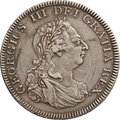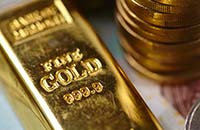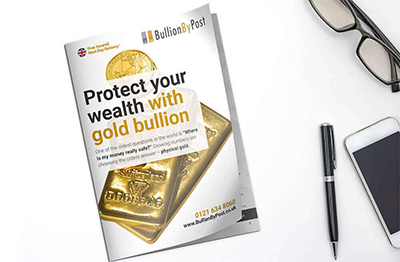Trade Dollar
Silver Trade Dollars were produced from 1895 until 1935 (demonetised in 1937) as a specific coin for British colonies, most notably Singapore, to use while trading with other nations in East Asia.
Dollars were only produced prior to this between 1804 and 1811 under King George III as part of a production of emergency currency. Interestingly, all of these coins bear the date 1804, regardless of which year they were actually produced in.
For more information about Trade Dollars please call 0121 634 8060 or email our customer services team at support@bullionbypost.co.uk.
1804 – 1811 Dollars
These coins were produced by the Soho Mint in Handsworth, Birmingham, rather than by the Royal Mint. On the front of the coin is the Laurel Wreath bust of George III, while on the back is Britannia sat on a throne, with a crown above the portrait’s oval framing.
All these restruck coins were dated 1804 and they had a value of five Shillings. In 1811 this value was increased to 5 Shillings and Sixpence (5s 6d).
Matthew Boulton was a manufacturer and famously the business partner of the engineer James Watt. Their company had provided the Royal Mint with modern equipment for coin production, and Boulton later founded the Soho Mint in his home city of Birmingham. By 1804 there was a shortage of silver, so Boulton – keen to show what his refinery could do – offered to help the Bank of England out by altering captured Spanish American 8-real coins.
The Bank had already attempted to remake these dollar coins into British money by striking a small image of George into the portrait of the King Ferdinand VII of Spain, but the public didn’t show much interest – instead preferring the mock the unpopular, aging King George with gibes including "The Bank to make their Spanish Dollars pass, stamped the head of a fool on the neck of an ass” and “Two kings’ heads are not worth a crown”.
The restrike work didn’t always completely hide the original Spanish coin detailing but given that neither Boulton or the BoE had the Royal Mint’s permission to make new currency, these coins were instead officially labelled as ‘tokens’ – to be kept in reserve as emergency funds.
The Royal Mint began to mint silver coins again from 1816 onwards, so in 1817 these Dollars were demonetised. Some of the Dollars survived but many were melted down and recast as new coins.
.
1895 – 1935 Trade Dollars
Britain and China fought the First Opium War between 1839 - 1842, and the Second Opium War between 1856 - 1860, after which China was defeated and opened its ports to British trade. It was following the second war that Hong Kong was ceded to Great Britain and that the Royal Mint ordered production of silver Trade Dollars for the colonies in the region, so that they may trade with greater ease with China, the US, and surrounding countries.
The Trade Dollars were engraved by George William de Saulles. The obverse features Britannia standing on the shore with trident and shield in each hand, and a merchant ship in the background. On the reverse are Chinese characters and Jawi Malay script inside an ornamental flower.
The coin states One Dollar or One Ringgit as its value. Around 270 million pieces were produced in London, Bombay (B), and Calcutta (C), with the fineness at .900 silver. There are some rare exceptions that were found to be .925, and certain years were not produced. For example, the 1921 Bombay Dollar was made but never released into circulation, and again between 1934 and 1935 the Bombay Mint’s Dollars were a limited release into circulation – before coin production ceased.
Trade Dollars were officially demonetised on 1st August 1937.












